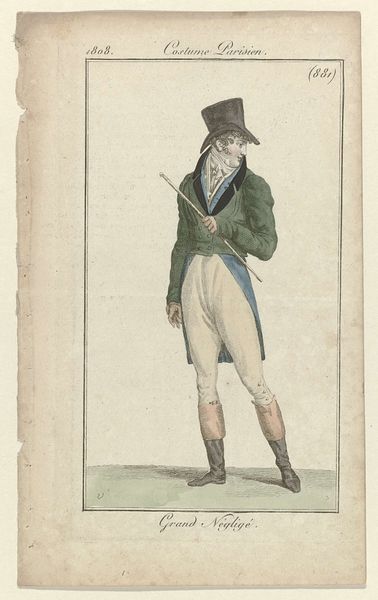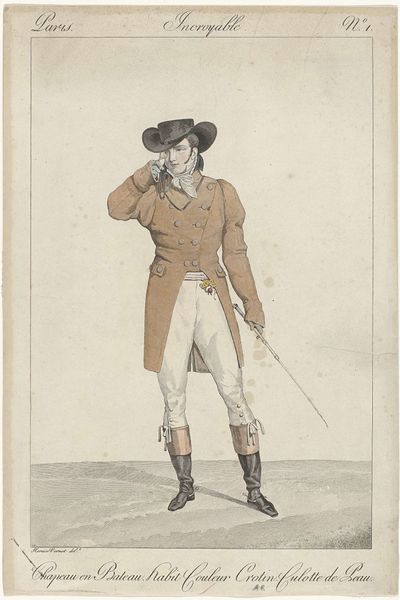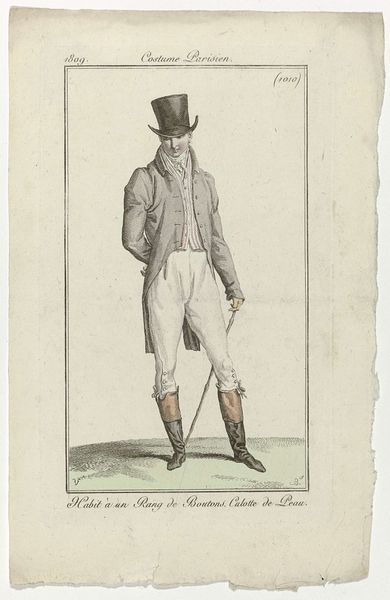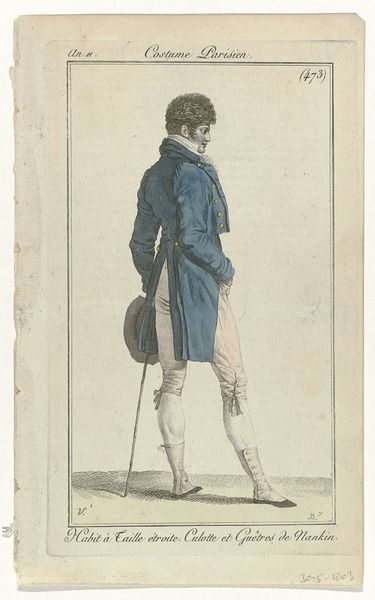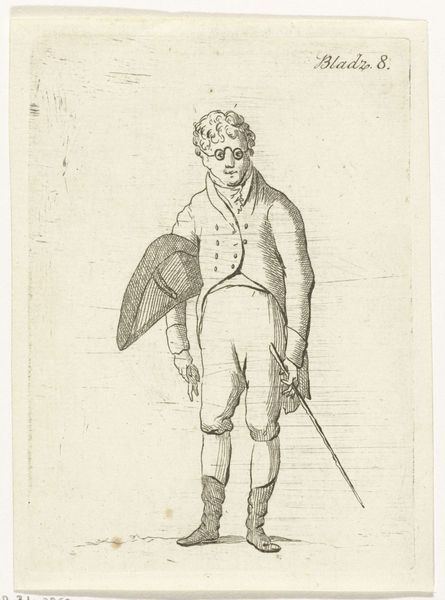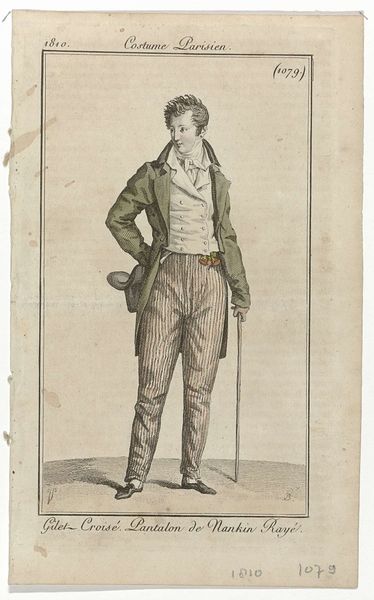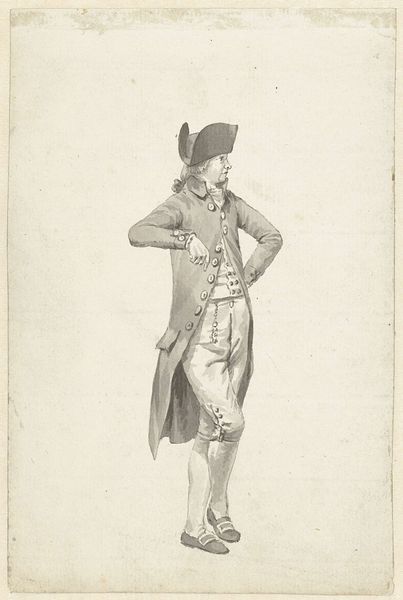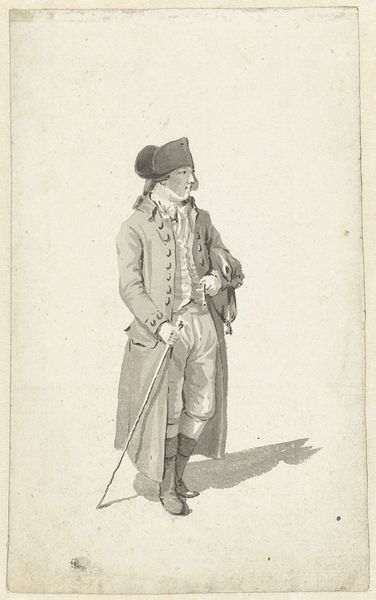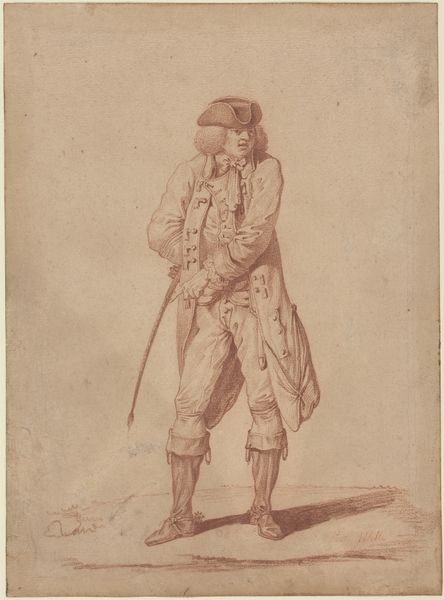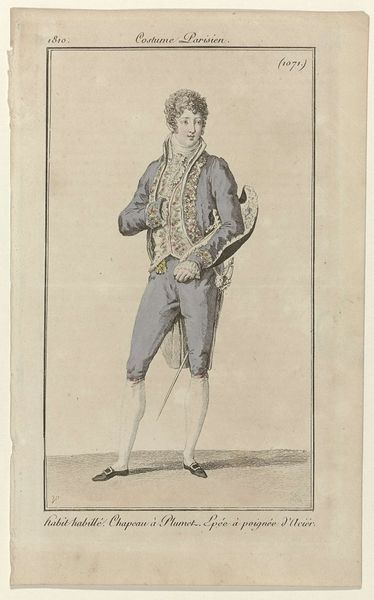
#
comic strip sketch
#
imaginative character sketch
#
quirky sketch
#
traditional media
#
personal sketchbook
#
idea generation sketch
#
sketchbook drawing
#
storyboard and sketchbook work
#
cartoon carciture
#
sketchbook art
Dimensions: height 177 mm, width 108 mm
Copyright: Rijks Museum: Open Domain
Pierre Charles Baquoy crafted this print, titled "Journal des Dames et des Modes: Men’s Fashion", around 1807. Observe the fashionable man, his nonchalant pose accentuated by the walking stick, a symbol of authority and leisure. This seemingly simple accessory carries echoes of the scepter, a potent emblem of power dating back to ancient civilizations. Consider the flutes or batons held by dignitaries of antiquity. These objects signified their rank and right to command. Fast forward, and the walking stick became an accoutrement of the bourgeois, still implying a certain status, albeit softened by the evolving social landscape. Here, it's not just a prop; it evokes a lineage of symbolic weight. It has become a marker of status in this new era. This evolution reveals how cultural memory adapts symbols, charging them with new meaning. The stick is a whisper from the past, resonating in the present with a different, yet connected significance.
Comments
rijksmuseum about 2 years ago
⋮
The Journal des Dames et des Modes occasionally provided coverage of men’s styles. These illustrations give a good picture of trends in mens’ clothing from 1797 to 1825. During the 18th century, gentlemen wore culotte (knee-breeches) 1. These fell out of fashion with the elimination of strict class distinctions during the French Revolution, to be replaced by a type of long trouser(s) known as pantalon à la Hussarde 2. These were worn with hussar boots. ‘Pantaloons’ 3 were trousers pulled tight with an elastic strap under the instep. Carrick 4 coats with a double collar were popular, and in the evenings men wore a special dress cloak 5.
Join the conversation
Join millions of artists and users on Artera today and experience the ultimate creative platform.
